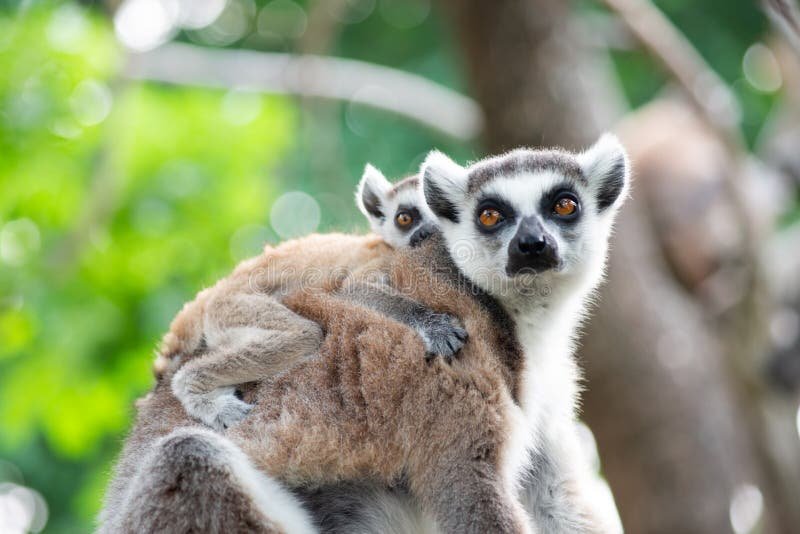
In the wild, lemurs face various threats and challenges, but they also have remarkable strategies to help their babies thrive. Whether they’re foraging for food or teaching their young how to navigate their habitat, every action is a lesson. So, let’s explore how these endearing animals raise their young, the social structures that support them, and some of the obstacles they overcome along the way.
The Social Structure of Lemur Communities
Lemurs typically live in groups called *troops*, which can vary in size from just a few individuals to over twenty. The social structure is crucial for the survival of the young. Troops usually consist of related females and their offspring, while males may come and go. This arrangement allows for a supportive environment where mothers can rely on each other.
In these close-knit communities, females often form strong bonds. You might picture them as a kind of extended family, where they groom one another and share the responsibilities of raising the young. This cooperation is vital—when mothers need a moment to rest or foraging, other females in the troop can step in to help keep an eye on the little ones. It’s like having a village to raise a child, ensuring that every lemur has a watchful eye.
Maternal Care and Nursery Practices
When a female lemur gives birth, she becomes intensely focused on her newborn. The bond between mother and baby is immediate and essential. At first, the infant clings to its mother’s belly, where it feels safe and secure. The mother will carry her baby everywhere, whether she’s climbing trees or scoping out food.
Lemurs are known for developing *nursery* behaviors. Young lemurs often play together while mothers forage nearby. This play isn’t just fun; it helps the young develop social skills and learn how to interact with others in their troop. It’s a bit like how kids play on the playground, learning important lessons while also having a blast!
Feeding and Nutrition of Young Lemurs
Feeding young lemurs is a critical task for mothers. Lemurs are herbivores, primarily eating leaves, fruits, and flowers. As soon as the infants are old enough, mothers start introducing them to solid foods. This process is gradual, much like teaching a child how to eat with utensils.
By observing their mothers, young lemurs learn which foods are safe to eat. They also discover how to forage for food in their environment. Imagine a little lemur watching its mother pull a leaf off a tree, learning that this green morsel is delicious and safe. It’s all about passing down knowledge and ensuring the next generation knows how to survive.
Challenges and Threats to Young Lemurs
Raising young in the wild isn’t without its challenges. Predators pose a constant threat to lemur infants. Birds of prey, snakes, and even larger mammals can pose dangers. Mothers have developed keen instincts to protect their young, often hiding them in dense foliage or keeping them close while foraging.
Additionally, habitat destruction is a significant concern for lemurs. With forests being cut down, their homes and food sources are dwindling. Mothers must adapt by traveling further or adjusting their foraging patterns. This situation can make it harder to care for their young, as they might have to venture into unfamiliar territories, increasing the risk of danger.
The Role of Fathers in Lemur Families
You might be wondering where the fathers fit into all of this. Well, in most lemur species, it’s mainly the females who take charge of raising the young. However, males play a role, though it’s different from what we might see in other animal species. Male lemurs often help protect the troop, entertaining and engaging with the young but typically don’t take on full parenting responsibilities.
That said, some males can form close bonds with their offspring. They might play, groom, or show affection, helping to create a nurturing environment. It’s like being the fun uncle who occasionally steps in to help the kids have a good time.
Learning and Socialization Among Young Lemurs
As the young lemurs grow, they begin to explore their surroundings more independently. This is a crucial time for socialization. They learn how to communicate, play, and establish their standing within the troop. Much like how children learn from their peers, young lemurs observe and mimic the behavior of older members.
Their playtime is important, not just for fun but for developing skills necessary for survival. They learn how to climb, forage, and even engage in social hierarchies. Watching them is like watching a tiny version of the adult troop, as they experiment with their roles and behaviors.
Adapting to the Wild: Learning from Mistakes
Even in the wild, mistakes happen, and they contribute to learning. Young lemurs may venture too far or get too curious about something dangerous. But this trial-and-error is part of their education. Mothers often intervene when necessary, showing the young ones which behaviors are safe and which are not.
Mistakes teach resilience, and these experiences shape young lemurs into capable adults. It’s a bit like how kids might touch a hot stove once; they learn quickly to stay away from it in the future. In the wild, survival requires a sharp learning curve, and lemurs are no exception.
The Importance of Conservation Efforts
Understanding how lemurs raise their young underscores the need for conservation. Habitat destruction, poaching, and climate change threaten these unique creatures. By raising awareness and supporting conservation efforts, we can help ensure that future generations of lemurs can continue their incredible life cycles.
Efforts to protect Madagascar’s forests are essential not just for lemurs, but for countless other species sharing their habitat. By participating in or supporting these initiatives, we can make a difference in the survival of lemurs and their young.
In conclusion, lemurs have a captivating way of raising their young, blending natural instincts with community support. From protective mothers to playful socialization, each moment is crucial in their journey to adulthood. Understanding their life cycle helps us appreciate these charming creatures and the challenges they face in the wild. By learning about their parenting methods, we can foster a deeper connection to the animal world and the importance of conservation.

